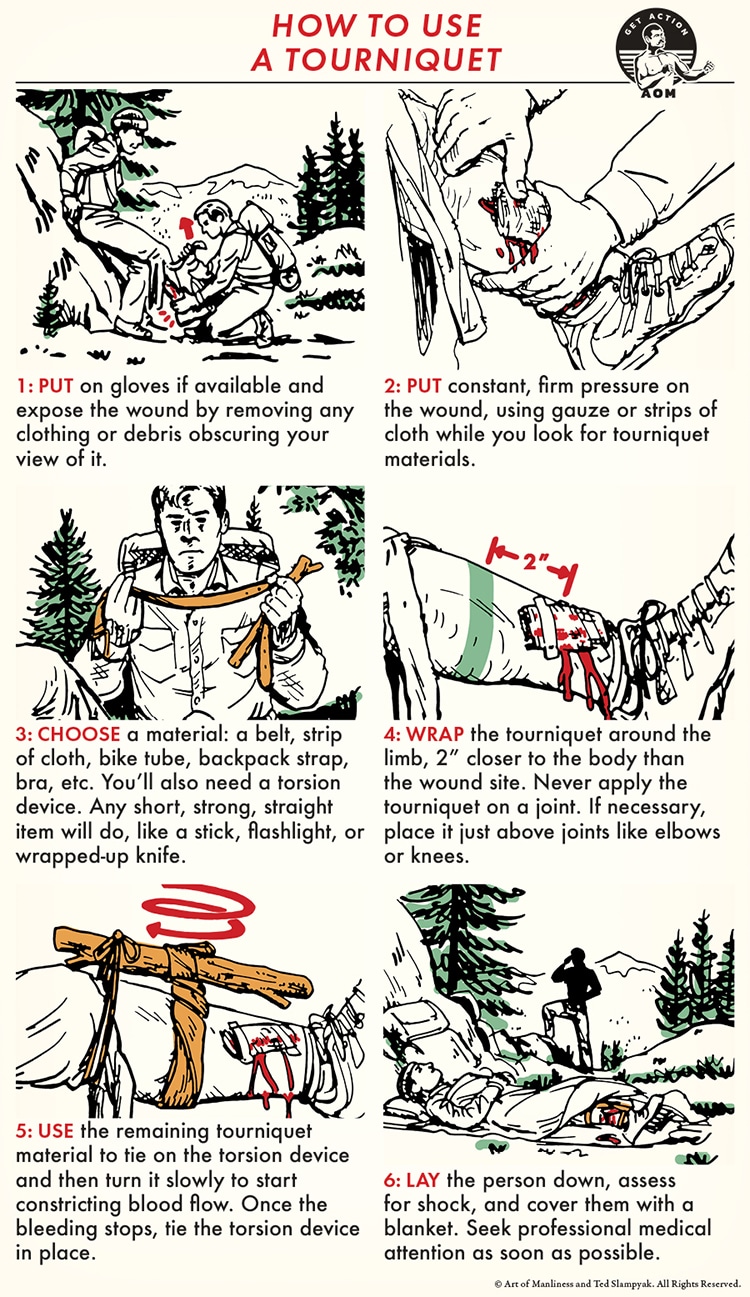
An important part of manhood has always been about having the competence to be effective in the world — having the breadth of skills, the savoir-faire, to handle any situation you find yourself in. With that in mind, each Sunday we’ll be republishing one of the illustrated guides from our archives, so you can hone your manly know-how week by week.
Tourniquets exist in a class of medical techniques associated with wilderness survival and military medicine primarily because they are only used in drastic, uncontrollable circumstances. Whether on the battlefield or some distant peak, a tourniquet is often the only way to stop excessive bleeding to severely injured limbs. Using a strip of fabric, belt, or other material, tourniquets constrict blood flow until the wound can be attended to by medical professionals.
During World War II, tourniquets were used heavily in the field, but because soldiers often had to wait hours on end to be seen by surgeons and medics, their constricted limbs suffered nerve and tissue damage that forced amputations. The perceived relationship between tourniquets and amputation caused them to fall out of use for decades, but research that emerged from the battlefields of Iraq and Afghanistan showed that, when used correctly, the benefits of tourniquets far outweigh the risks, especially in circumstances where patients can receive proper medical care within a few hours of their application.
The bottom line is that when blood loss from a limb injury risks death, a tourniquet is a lifesaving technique that cannot be ignored.
Like this illustrated guide? Then you’re going to love our book The Illustrated Art of Manliness! Pick up a copy on Amazon.


